
Inclusiveness in content creation and marketing is all about respecting and accepting human diversity in all its dimensions, including age, gender, color, ethnicity, language, culture, and sexual orientation. It also includes experiential diversity spanning mental and physical abilities, marital and parental status, and socio-economic positions and job roles.
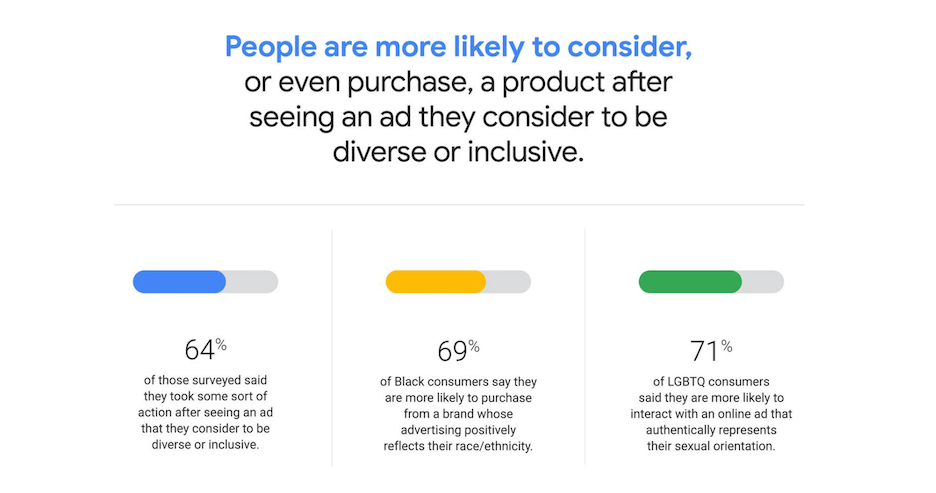
Inclusive content, indeed, covers a broad array of human aspects and experiences.
It acknowledges individual differences that exist within a population and weaves them beautifully into a powerful narrative.
Why Is Inclusivity Important in Content Marketing?
One of the most important contents marketing essentials is to figure out who you want to appeal to through your content and marketing efforts. These people constitute your target audience. Understanding your target audience is the first step in creating an effective and impactful marketing plan. While it’s imperative to factor in all possible aspects of your target demographics, including their age, gender, sexual orientation, social status, and income, it’s also important to make sure you don’t exclude any key demographic member just because they don’t fit into the stereotypical image of your audience.
According to an IPSOS study, 63% of people believe they are not represented in advertising. 72% believe that most advertising campaigns don’t accurately reflect the world around them. 60% of respondents believe their friends, family, and acquaintances are not represented accurately. This shows that problems of underrepresentation and misrepresentation in advertising are real, and they upset people. This can impact a brand’s image negatively.
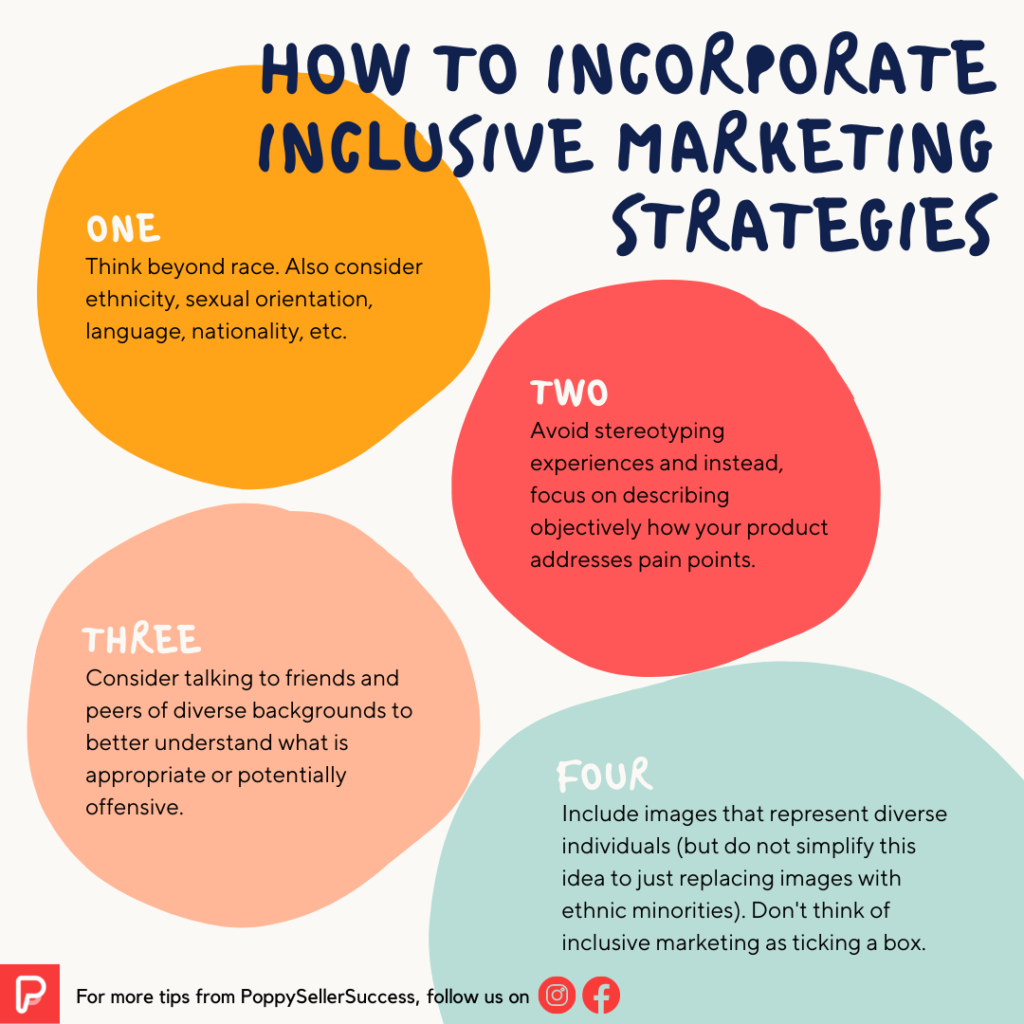
People are more inclined toward products and services advertised by models who look like them. Therefore, companies that embrace inclusion quickly get an advantage over their competitors. Marketers spend considerable time, effort, and money on creating campaigns that promise to solve certain problems. But how credible are your marketing campaigns if you don’t accurately represent the audience?
Models in the fashion industry have long been tall, thin, and fair. However, this has changed dramatically in recent years, with a greater demand for models who are like the people buying the apparel and accessories being advertised. With representation from different communities, fashion blogging has also played a significant role in boosting inclusivity.
Brands that highlight diversity and inclusion in their campaigns are more likely to be seen as socially conscious and responsible. Inclusive content creation is a way to build trust, loyalty, and real relationships with consumers. It can also help underrepresented voices to be heard, driving positive social change.
Creating inclusive content can be considered among the most irreplaceable content marketing essentials. In fact, standing up for a cause is imperative if you want to make a far-reaching impact through your brand, given the expectations of today’s consumers.

How to Create Effective Inclusive Content
Here are a few tips to create inclusive content that resonates with the audience.
1. Search for blind spots
Who are you currently targeting? This should be your first question as you begin to create more inclusive content. Although having a target audience can help you narrow your focus and determine your campaign’s content, it will not necessarily win loyal fans. Why so? Because a broad, generalized customer image can never align with every member in the audience. You risk alienating potential customers if the imagery and language you use appeal only to a certain demographic.
To avoid alienating any particular cross-section of your target audience, make sure you use inclusive language and imagery. Once you begin focusing on a wider audience, your content will be more engaging and thoughtful than your competition. Many companies still overlook diversity and inclusion, particularly when it comes to content creation. However, if they undertake a thorough review of their campaigns to identify and fix any blind spots, they will be able to breathe new life into their marketing efforts and establish positive relationships with all stakeholders.
2. Make your content accessible
The way you present your content can be as important as the content itself, especially
from an inclusion standpoint. Creating inclusive content is not enough; you must also make it accessible to every member of your target audience.
If you are into SEO blog writing, you will have to make sure your entire website is accessible. Check if your readers can interact with all the pages on your website, including your blog, without hassle. Next, ensure that the image alt tags used in the pages are relevant and not used for keyword stuffing. Use proper headings and add appropriate captions to videos. These are not the only vital aspects. There are several others that you can consider, such as:
- Reducing excessive motion in design elements
- Ensuring the site’s compatibility across browsers
- Keeping the images and videos light, so they load faster
3. Use inclusive language
Your words matter! While they can uplift and inspire, they can also divide and cause exclusion. Thus, you need to be cautious about what language you use when creating inclusive content.
Always use gender-neutral language so that no one, regardless of their gender, feels left out. Avoid using words, such as “mankind” or “salesman.” Instead, use “humankind” or “salesperson.” Politicians or CEOs don’t always have to be male. Similarly, a stay-at-home need not be a woman. These situations are best served by using a gender-neutral pronoun, such as “they.”
However, it’s important to note that content creation often goes beyond using gender-neutral language. Brands must also pay attention to the background or the context of the words and phrases they use. Many phrases and idioms that appear innocent at first can actually be divisive. Also, using words like “crazy” or “dumb” in a derogatory sense can be demeaning to people with mental or physical disabilities.
Besides, using difficult idioms may exclude those who don’t have sufficient background knowledge of the idioms of the language. Phrases like “out for the count” won’t make sense to someone who doesn’t know about boxing or speak English fluently. Similarly, “ballpark figure” will mean nothing to you if you don’t have an understanding of the baseball game. A truly inclusive language takes care of all such aspects.
4. Invite audience inputs and assistance
Talking about inclusive content marketing essentials, how can we not mention user feedback? Remember, creating inclusive content is not a one-off task but a continuous process. Hence, you should have an honest and open dialogue with your audience as well as third parties to achieve this goal.
The truth is, that everyone has different worldview. And you will never know what you don’t know about your audience until you listen to what they want to say. So, encourage and welcome feedback. You can create inclusive content faster if you are open to discussion and allow readers to comment on your content.
Also, make sure the people who create and edit content for you understand and care about your needs as a brand. This will help them unfailingly spot insensitive language or poor phrasing, and make the necessary corrections.
5. Make sure your images and videos reflect inclusivity
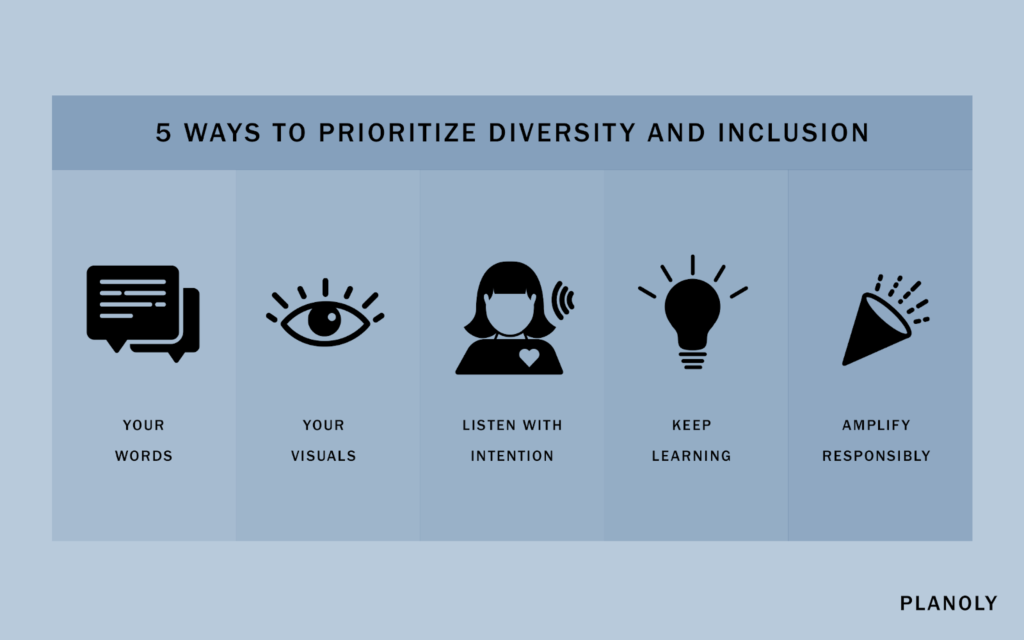
It doesn’t suffice to write inclusively. You should also promote inclusion through your visuals. When your customers see people like themselves being represented in your campaign visuals, they will feel more included, empowered, and special. They will identify more with your brand and products, helping you grow as a brand.
Make your content more unique by featuring photos of diverse people. This can include people from different backgrounds, including those of different ethnicities or linguistic and religious minorities.
6. Deliver strong messages in a simple way
It’s not always the language used in your writing that creates trouble. Your writing’s structure and format could also be problematic. Writers have an uncanny fondness for deep words, and they love to express their linguistic knowledge through their writing. But then, if you are a content writer, you are writing for laypeople.
That means you should avoid using flowery language with too many complex words and sentences. Using difficult words and sentence structures will hamper your content’s readability, and will exclude a lot of readers. So, it’s advisable that you write keeping the following points in mind:
- Write short sentences and words.
- Create short paragraphs with appropriate subheadings.
- Avoid industry jargon, abbreviations, and other specialized terms that are difficult to understand for the average consumer.
- Break down information lists using bullet points.
- Use an active voice when writing to keep your content concise and as clear as possible.
The idea is to increase the readability of your content. Thankfully, there are apps like Grammarly and Hemingway Editor that can be used to assess the readability of a piece of content and then improve it.
3 Examples of Brands Doing Inclusive Content
1. Dove’s #ShowUs campaign
If you have watched Dove’s commercials, you must have noticed that they use different types of women to relay their message. In one of their campaigns, women created their own search descriptions as well as tags for the images that featured them. This allowed them to define who they were and what they were looking for. It also helped break stereotypes around how women in the media should look. Dove’s ads have always highlighted inclusiveness as one of the most important contents marketing essentials, inspiring others to follow suit.
2. Burger King’s Impossible Whopper campaign
You probably think of race or religion when you hear the terms “diverse” and “inclusive.” But diversity is so much more than these two words. In this case, it’s about dietary restrictions. Burger King introduced the Impossible Whopper to appeal to vegetarians, vegans, and non-beef eaters who may not have tried them before.
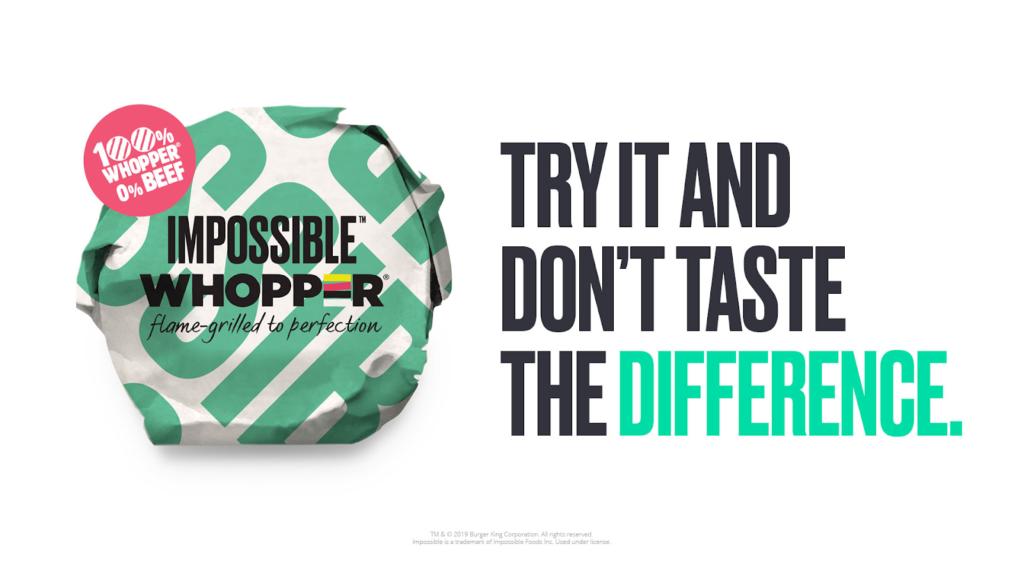
This smart move by Burger King is in line with today’s growing popularity of plant-based diets. Through this ad, the brand tried to give the public assurance that they didn’t only cater to meat-lovers.
3. Etsy’s “Gift Like You Mean It” campaign
Etsy is the go-to place for custom or unique gifts, and their “Gift Like You Mean It” ads redefine inclusiveness. These ads were created to show how Etsy can help those people who feel excluded because of their indigenous names.
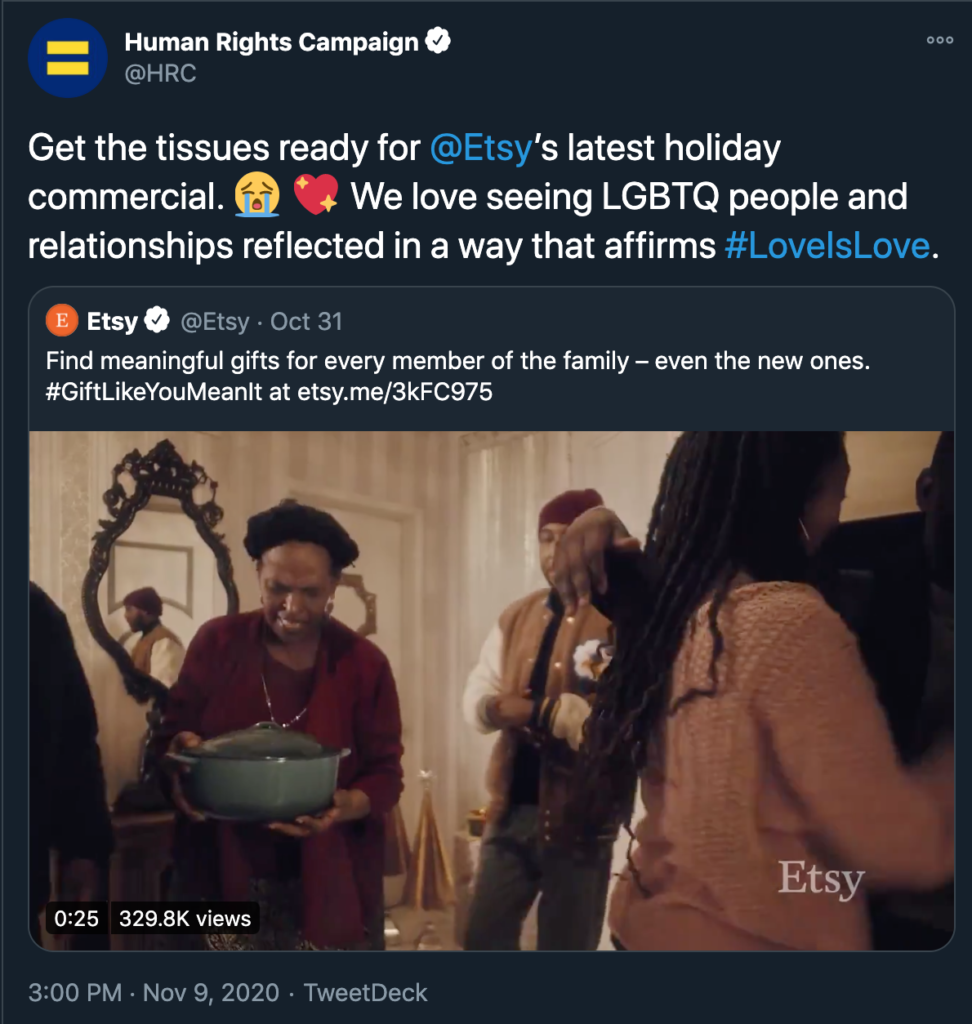
While the ads revolved around custom gifting, they highlighted familial relationships, indigenous names, and same-sex relationships. The ads strike the right chord with the audience, and, thus, make a positive impact on consumers’ minds.
Inclusive content creation and marketing can improve brand perception. In addition, it can boost customer retention, employee morale, as well as productivity. If you want to do business and be socially responsible at the same time, then you must elevate diverse voices and role models through your campaigns. Also, today’s conscious consumers expect brands to foster an inclusive culture. So, brands that meet it will stand out, grow, and lead positive social change.
Key Takeaways
- Inclusiveness is about respecting your audience’s physical and experiential diversity.
- Problems of underrepresentation and misrepresentation exist in advertising.
- With inclusive content, you can build positive relationships with all your brand’s stakeholders.
- Promoting inclusion through textual content alone is not enough. You should also use visual content to promote it.
FAQs
Inclusion strengthens a brand’s relationships with customers. Inclusive content shows that the brand cares about its customers equally, without discrimination.
Many brands have now started counting inclusiveness as one of their content marketing essentials. A great example of inclusive content would be Burger King’s Impossible Whopper campaign, which set an example by addressing the needs of non-meat-eating customers.
They are as follows:
1. Breaking stereotypes
2. Avoiding appropriation
3. Emphasizing context
4. Ensuring representation
5. Being inclusive with language
6. Using the right tone
No, it’s not mandatory but highly advisable. An inclusive approach to marketing can be far more beneficial for your brand than you can imagine.
Consumers want brands to understand them. This is why inclusion and a sense of belonging are becoming increasingly important for effective marketing. According to marketing experts, ads that target every type of consumer, regardless of race, religion, or complexion, have a greater impact on consumer behavior.
Latest Blogs
Explore how Google’s 2025 AI search updates triggered ranking chaos. Learn actionable strategies to adapt your SEO for AI Overviews, zero-click searches, and SERP volatility. Stay ahead now.
Learn how to rank on AI search engines like ChatGPT, Perplexity, and Gemini by optimizing your content for authority, structure, and relevance. Stay ahead in AI-driven search with this strategic guide.
Explore the best healthcare SEO services for your medical practice. Improve online visibility and effectively reach more patients in need of your services.
Get your hands on the latest news!
Similar Posts

B2C Marketing
5 mins read
Top Choices for Best Content Marketing Services in B2B Industries

Artificial Intelligence
5 mins read
How A Lead Generation Specialist Can Use AI-Powered Content Funnels to Drive Conversions

Artificial Intelligence
4 mins read